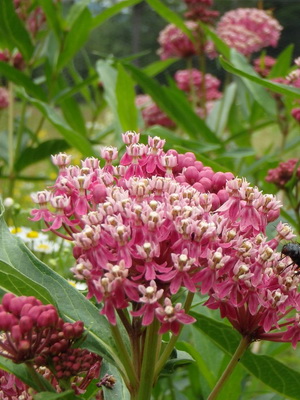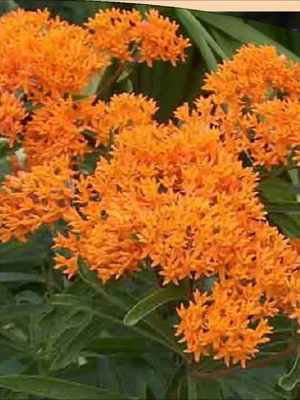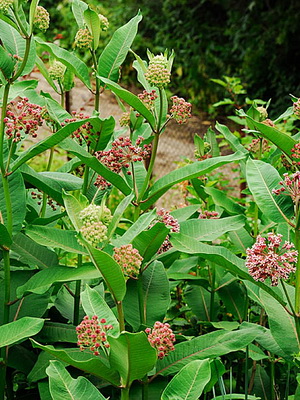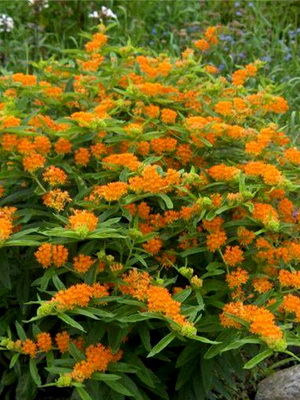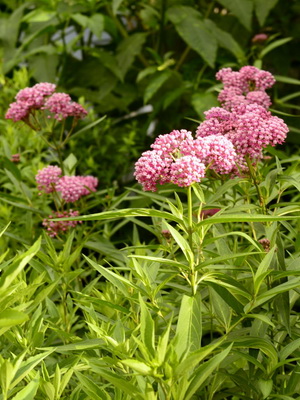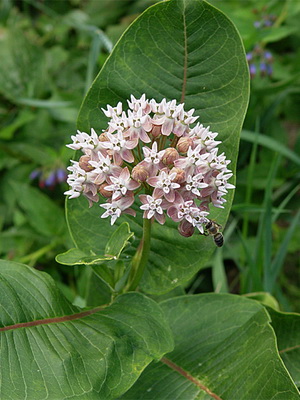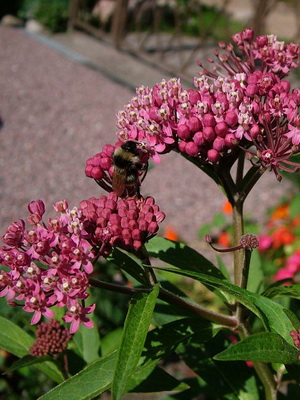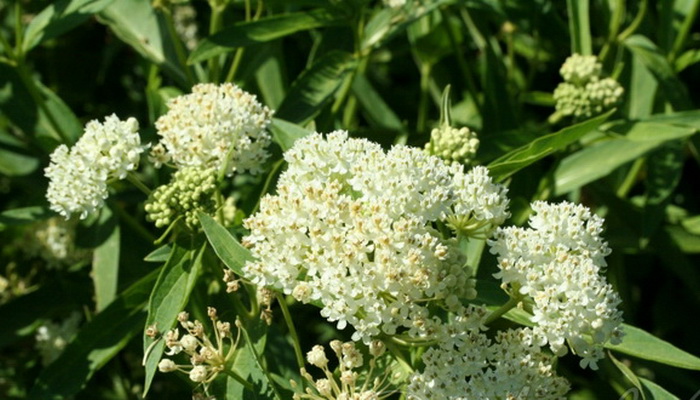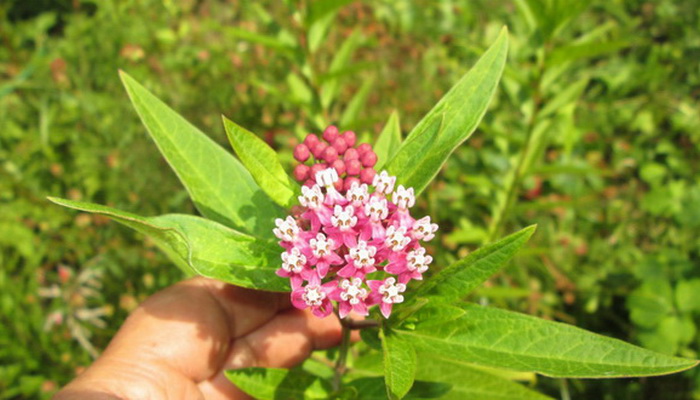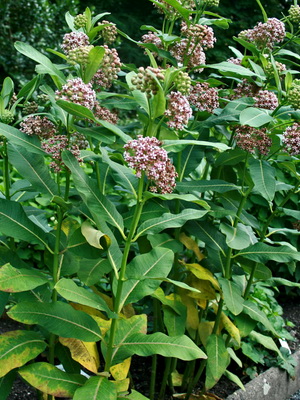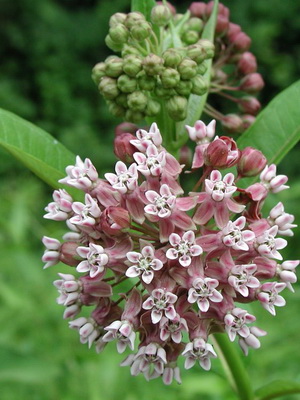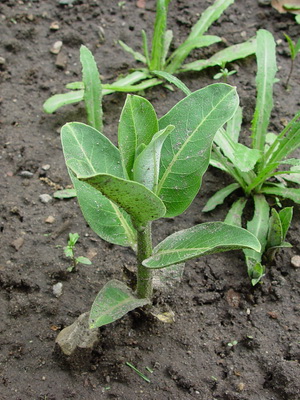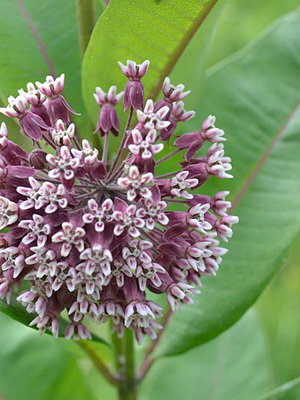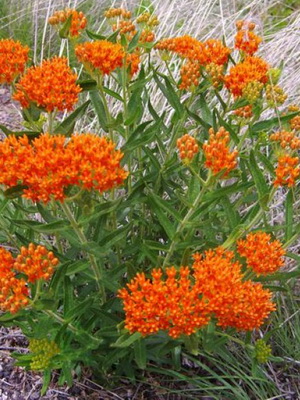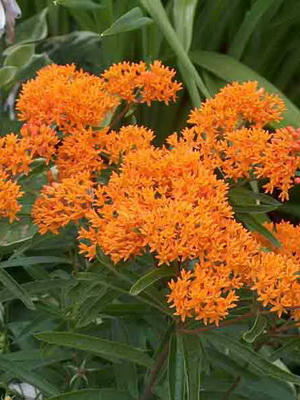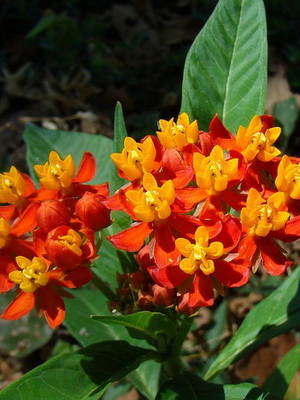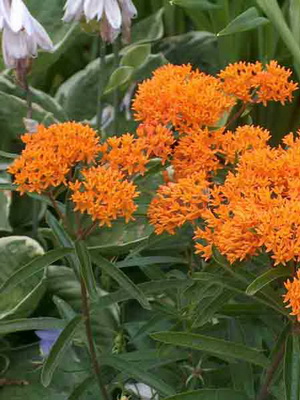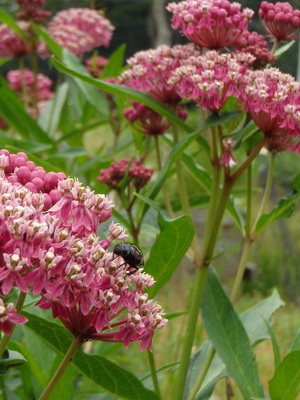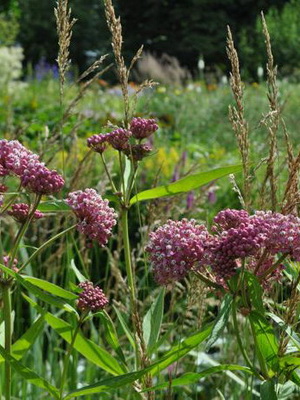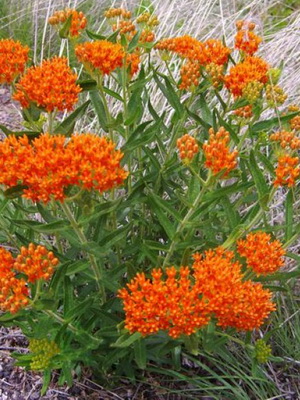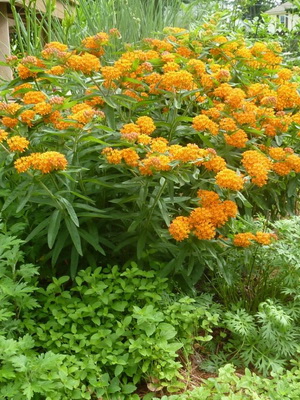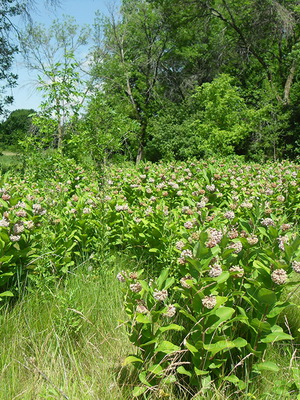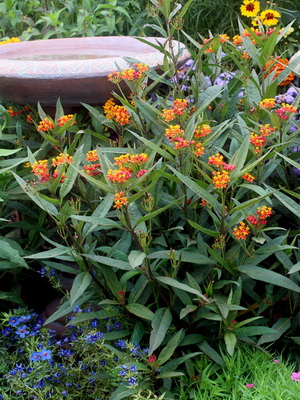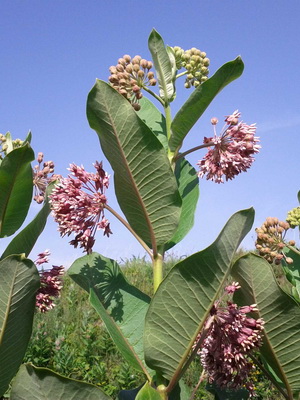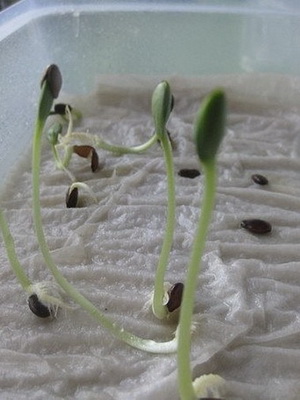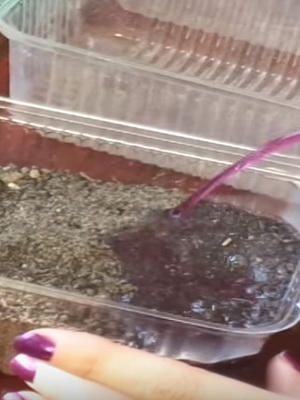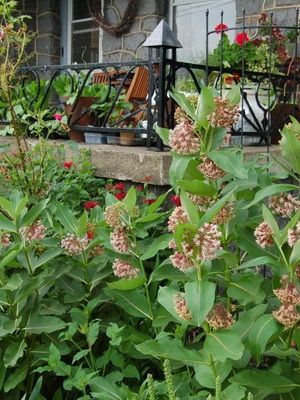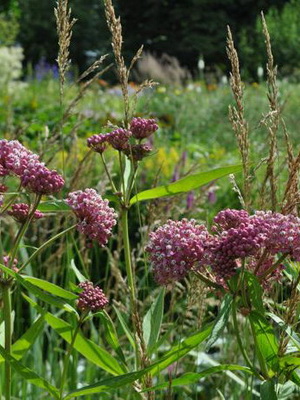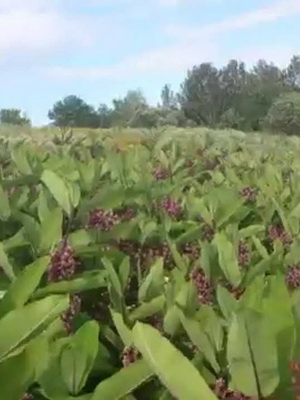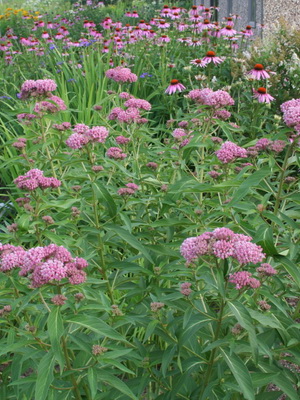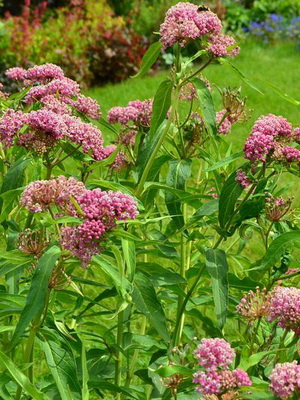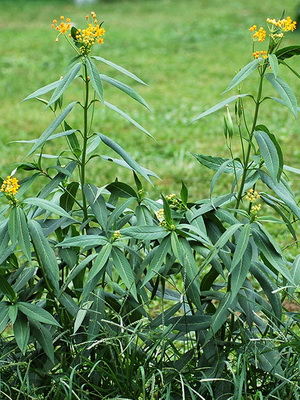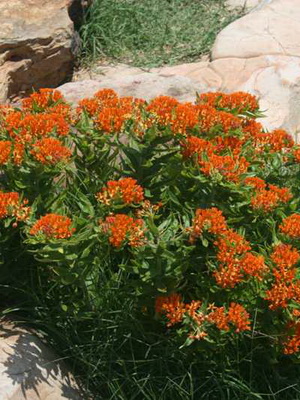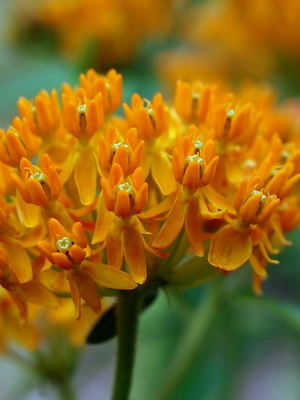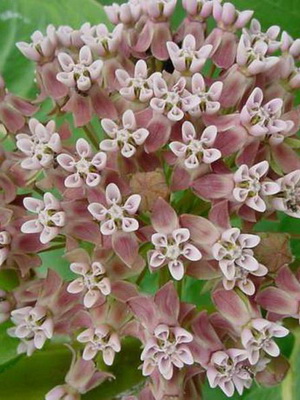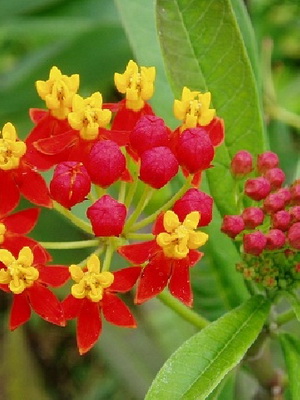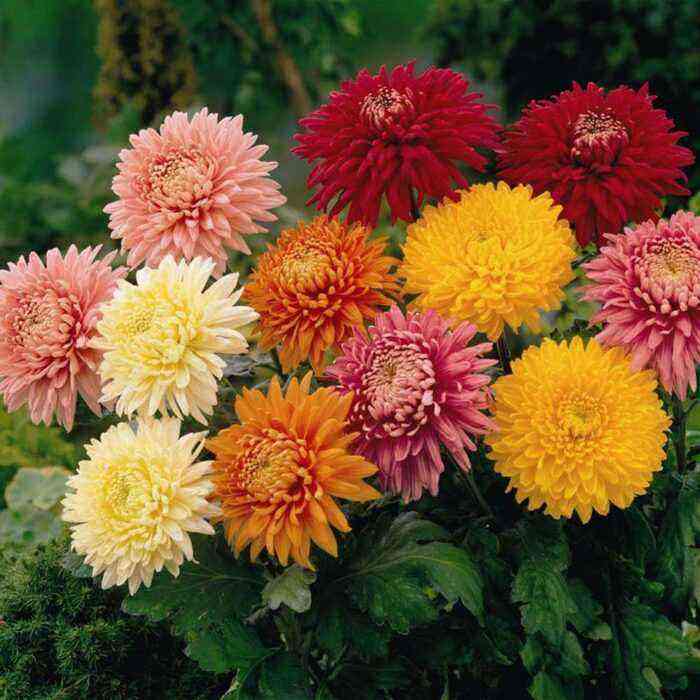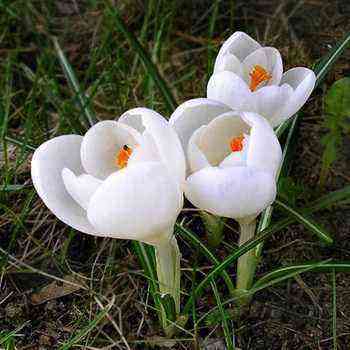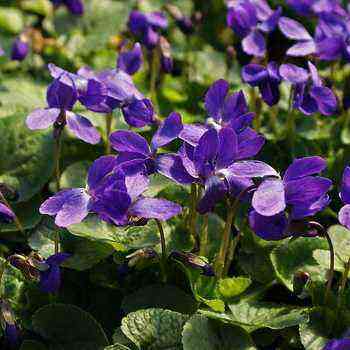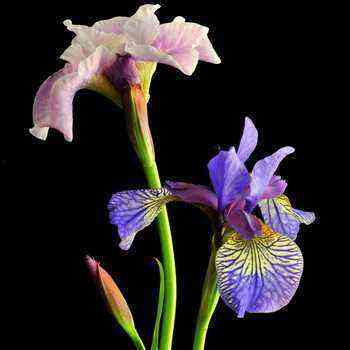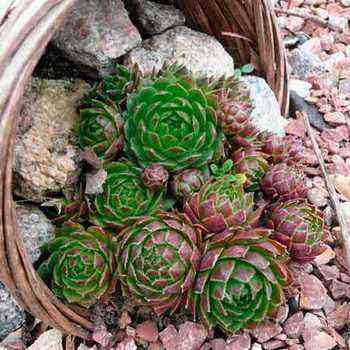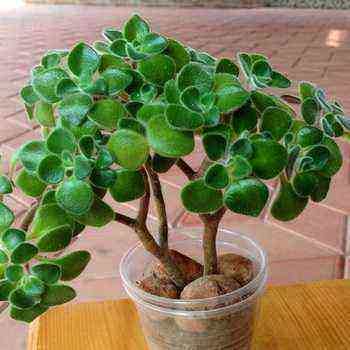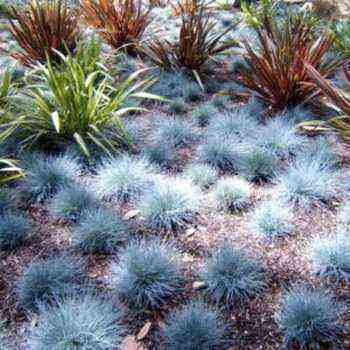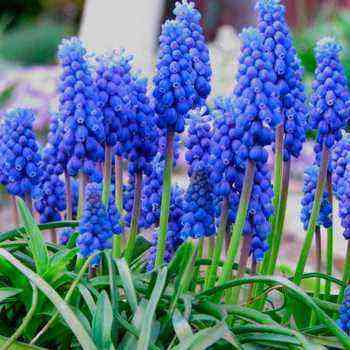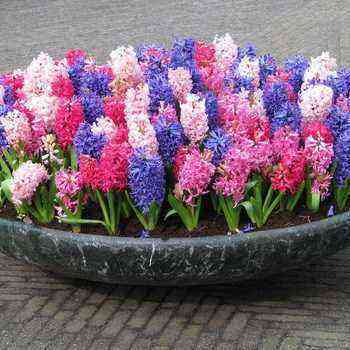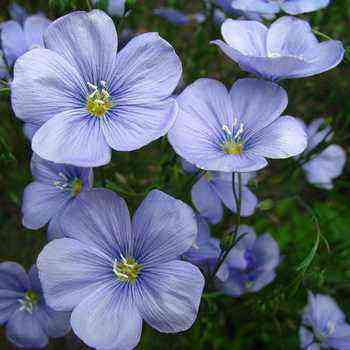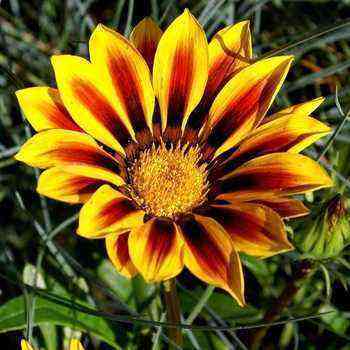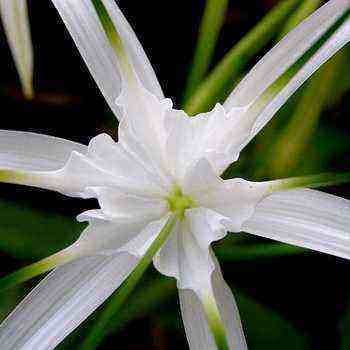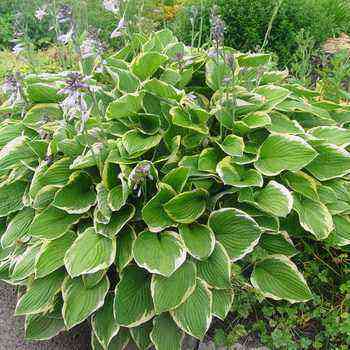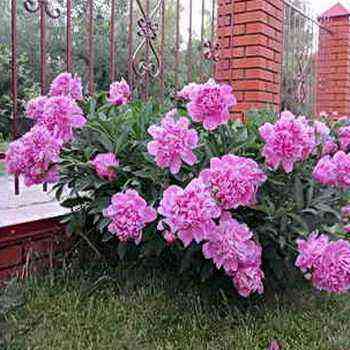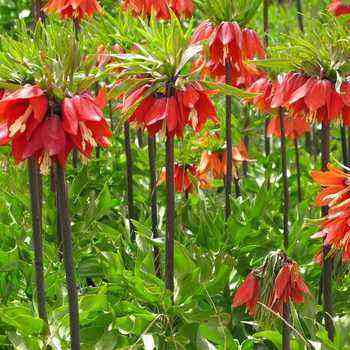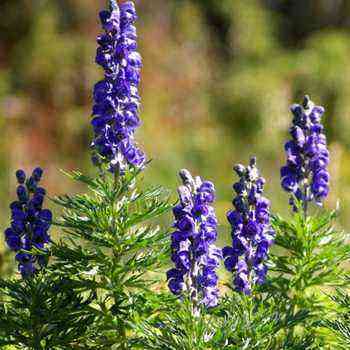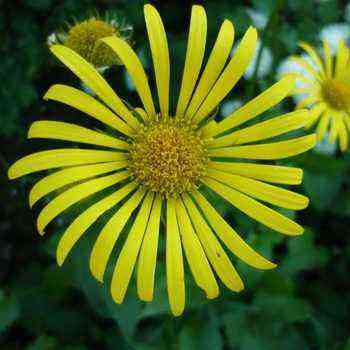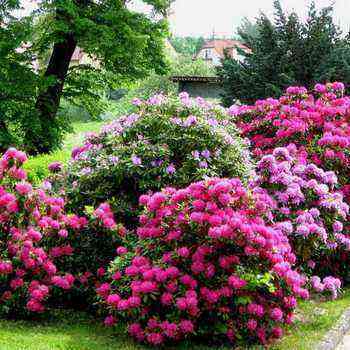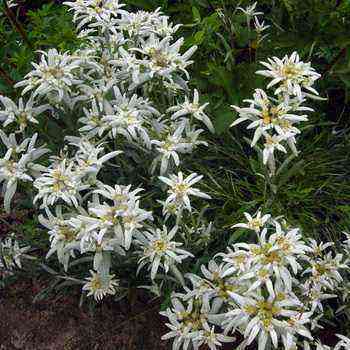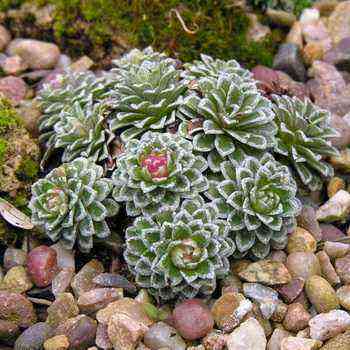
The vatnik or asklepias plant is an infrequent visitor to garden plots, because many gardeners consider it a weed, not knowing what opportunities an unpretentious and interesting culture provides them for creating decorative flower arrangements. In addition, asklepias does not require constant care and attention, is able to grow rapidly and bloom for a long time. It suppresses the growth of weeds, eliminating the need for the grower to weed in the area where it grows.
About what types and varieties of cotton wool are used in gardening, as well as how to properly grow this crop, will be discussed in this article.
The origin of the fleece
Homeland – America, several species from Africa. In nature, there are 80 species of this plant. For cultivation in the garden, 3 perennial species and 1 annual are used.
The generic scientific name is given by the name of the god of healing Asclepius, or Aesculapius (Greek – Asclepios, Latin – Aesculapus), for the medicinal properties of its species. Ripe seeds of cotton wool are covered with fibrous cotton wool, for which the plant got its name.
For the first time, the fleece came to Europe in the 17th century. as a technical culture and quickly spread in France, Germany and other European countries. It can be assumed that the cotton wool was soon brought to Russia as well. At first, the stems were used to make fibers for coarse fabrics, ropes, upholstery for furniture and soft toys. Later, the tuft of wool was used to make film, various life-saving equipment, since they practically do not get wet. Tufted hairs were added in the manufacture of silk, cotton, woolen and other yarns, and from these “mixtures” surprisingly beautiful, shiny, fabrics were obtained, but, alas, fragile. In some cases, tuft hairs were used instead of cotton wool.
Botanical description of cotton wool
According to the botanical description, vatnik is a perennial herb, often up to 2 m high, with simple, opposite, large, thick oval and oblong leaves, about 12 cm long, covered on the underside with tomentose pubescence. The upper part of the leaf plate is dark green, the lower one is gray-green. The central vein is clearly pronounced on the leaves. Leaves keep on a short petiole.
The root system is strong, pivotal, with root shoots extending to the side. The stalk is thick, hollow, and milky juice appears at its break.
The flowers of the Asklepias plant are bisexual, small, spindle-shaped, fragrant, red, white, orange-lilac or pink-lilac. Collected in cymoid umbellate inflorescences. The perianth is five-membered, double. The calyx is split-leaved. Stamens 5.
The fruit is a crescent-shaped capsule with a corrugated surface, about 12 cm long. A fully ripe capsule bursts, dark brown seeds with white pubescence fly out of it.
Blooms in July – August. This culture begins to bloom 2 – 3 years after planting.
You can take a closer look at the structure and color of the inflorescences of the fleece plant in the photo below:
Types and varieties of fleece
Meat-red vatochnik, or incarnate (Asclepias Incarnata L.) In the USA it is called a marsh dairy, pink dairy, marsh silk plant. Distribution and habitats Homeland – the eastern and central regions of North America.
Perennial herb up to 120 cm high. The leaves are opposite, slightly hairy, elongated or broadly lanceolate. The flowers are red or pink-purple with a pleasant aroma, collected in an umbrella-shaped inflorescence up to 6 cm in diameter. Blooms in July-August. There are decorative varieties with white flowers. The meat-red aroma is softer than that of the Syrian quil, and most of all resembles fresh chocolate butter.
Meat red fleece varieties:
“Ice Bucket” – white flowers, collected in umbrella-shaped inflorescences;
“Sinderella” – pink flowers.
The meat-red look of the fleece flower is shown in the selection of photos below, where you can also consider its varieties.
Syrian cottonwood (Asclepias Syriaca L.) In the United States, it is called a common dairy plant. Syrian vatochnik is also known as aesculapian, milky and swallow grass. Syrian vatnik has nothing to do with Syria. The Italian traveler and naturalist Cornuti mistook the cottonwood for another plant – “kendyr” growing in the Middle East, in particular in Syria. Karl Linnaeus established that these are different, albeit closely related plants, and attributed it to the genus “Asklepias”, but left behind the definition of “Syrian”. Distribution and habitats Homeland – the eastern states of North America.
Syrian willow herb is a perennial herb for open ground up to 150 cm in height, which has oblong-elliptical dark green, leathery leaves 10-15 centimeters long and 5-7 centimeters wide. Flowers up to 1 cm in diameter, light pink, fragrant, collected in large umbellate inflorescences. Blooms in July for 30–35 days. The fruit is a swollen, crescent-shaped green capsule with a corrugated surface, 10–12 centimeters long, when ripe opens on the sides. Numerous dark brown seeds are covered with long snow-white silky hairs. The wind carries seeds over long distances, but in the middle lane they, unfortunately, ripen only in those years when there is a long dry and warm autumn.
Tuberose vatochnik is a perennial herb, reaching up to 70 cm in height. Possesses orange flowers, gathered in dense-set inflorescences of umbrellas. Bloom lasts from July to October. The species has an average frost resistance, therefore, in central Russia for the winter, it is required to cover it with spruce branches or dense material.
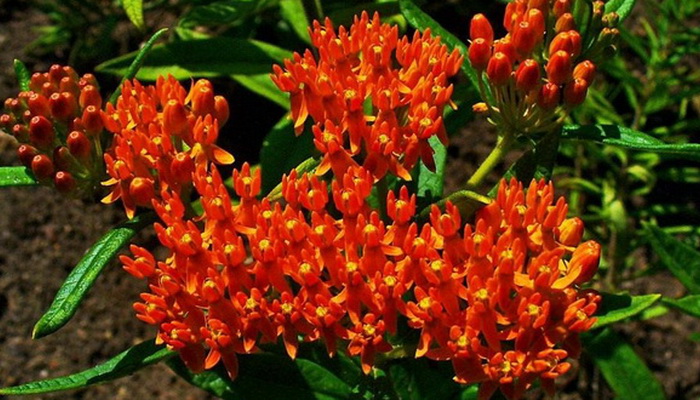
In the gardens, the most common variety of tuberose vatnik “Gay Butterflies” – with fiery red flowers
Kurassavsky cotton wool (A. curassavica). A perennial plant with a height of 70-90 cm. It has graceful, delicate inflorescences with red-orange flowers that can stand for a long time in the cut. The species is grown as an annual.
The following varieties of fleece are in greatest demand:

“Ballet on Ice” – with white inflorescences;
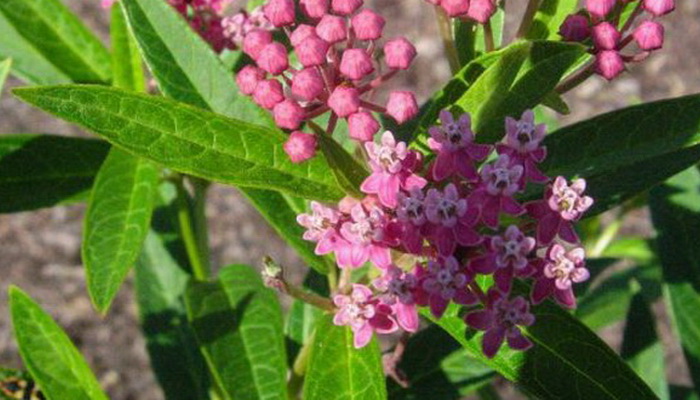
“Soulmate” – light lilac upper petals of flowers and deep lilac – lower ones;
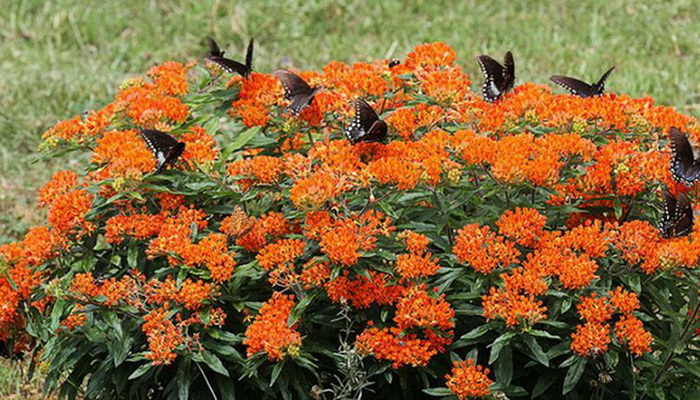
“Maharaja” – orange flowers;
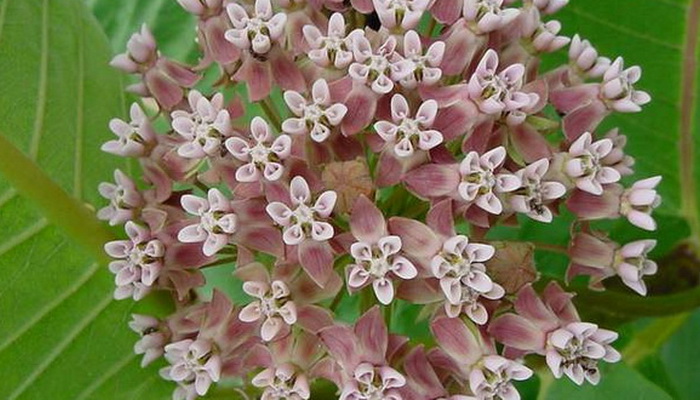
HERE TEXT
“Boa” – the upper part of the flower is white, the lower one is purple.
The described types and varieties of the asklepias flower are shown in the photo below, by looking at which the gardener will be able to better imagine their purpose in the garden:
Requirements for environmental conditions and care for the fleece
Like many other perennial herbaceous plants, asklepias is unpretentious and is quite capable of successfully growing, developing and blooming even in the absence of good conditions and care. This is not surprising, because the flower is often found in nature, choosing areas that are not entirely favorable for many plants. It easily tolerates the negative impact of the environment, has the ability to quickly recover, does not require frequent watering, fertilizing and lighting. The most demanding care is tuberous asklepias. Detailed information for gardeners on how to plant and care for cotton wool is given below.
Location. Asklepias is photophilous, it is planted only in sunny areas, although the meat-red species tolerates some shading. When planting, it should be borne in mind that Syrian cotton wool grows quite aggressively, capturing new territories. Therefore, if you want to have a more or less compact “bush”, the plant should be limited by digging a border around it, or grown in a container dug into the ground with good drainage holes. You can plant cotton wool far from other ornamental crops, in tapeworms, but it should be borne in mind that new shoots can form very far from the mother bush. In other words, Syrian cotton wool needs a lot of space, about 70 cm in all directions.
The soil. They are undemanding to the soil, any nutrient soils with a neutral or slightly acidic reaction are suitable.
Watering. The meat-red species of asklepias is hygrophilous, the Syrian species is drought-resistant.
Top dressing. When caring for the fleece, it is enough to apply fertilizer 2 times per season: the first time before flowering with the use of urea and potassium sulfate, the second time after flowering with the use of nitrophosphate.
In early spring, to stimulate growth and abundant flowering, it is recommended to add organic fertilizer, such as compost, under the bush.
Transfer. A transplant is required in order to rejuvenate the plant and give it a neat look. Flowers are being planted in a new place in 4 – 5 years, but many gardeners are replanting this culture after 10 years.
Winter hardiness. In order for the fleece to successfully overwinter and next year it can again please with its flowering, its shelter should be well prepared. All species, except for the Syrian, must be prophylactically mulched with sawdust, covered with a dry leaf or dried bark of trees. Before covering the plant, you need to cut off its stem up to 10 cm in length. The cut stems can be used as covering material. The Syrian species is frost-hardy, therefore it does not require shelter for the winter.
Breeding problems. In the process of growing cotton wool, the gardener rarely encounters any difficulties, but sometimes the asclepias in the garden can infect a whitefly, which feeds on the juice of this crop, sucking it out of the stem. From this the flower dries up. In the fight against the pest, drugs such as Actellik and Rovikurt are effective.
One of the possible problems when breeding a plant is the appearance of mold on the soil, soon after that you can observe rotting of its roots. This comes from the constant waterlogging of the soil caused by excessive watering. With excessive moisture, the leaves turn yellow and gradually fall off.
Sometimes the gardener notices that the Asclepias are shedding their buds. The reason for this is the drying out of the soil. It is necessary to immediately water and monitor the condition of the ground under the bush in the future.
Conditions for growing cotton wool from seeds
Propagated by seeds and vegetatively – by dividing a bush, a piece of rhizomes. It is preferable to divide in spring or in the second half of summer. She tolerates the transplant well.
In the warm regions of Russia, the cultivation of cotton wool from seeds is quite successful, while in the middle lane this method is impractical, since the ovaries may not appear.
For seed propagation, it is recommended to pre-stratify the seeds for a month in wet sand. In March, they need to be planted in containers with light soil. You can use ready-made soil for home flowers. At the bottom of the container, you must first pour a layer of drainage, then soil. Make small furrows in the soil and fill them with seeds. The embedment depth should be 1.5 – 2 cm.
After planting the seeds of the vatnik flower, take care: moisten the soil, cover the container with seedlings with a film to create a mini greenhouse, ventilate the greenhouse daily, removing the film for several hours. Watering should be carried out after 2 – 3 days, checking the condition of the soil, how dry it is. It is useful to spray the soil with water at room temperature.
When sprouts appear, the containers should be removed to a room with a temperature not higher than 18 degrees and sufficient lighting.
Seeds sown at home in such conditions sprout amicably and rather quickly, after about 10-15 days. After the plants get stronger, the film can be removed. The grown seedlings must be dived into separate containers with a drainage layer and nutritious soil. To stimulate growth, the tip must be pinched.
In early June, with the arrival of real heat, the plant is assigned a permanent place in the open field.
In warm regions, you can immediately plant cotton wool seeds in open ground, then take care of the crops. This work is best done in early spring, right after the snow melts. Prepare a site for planting in advance: dig up, remove weeds, loosen. After that, make deep furrows, moisten them and sow the seeds to a depth of 2 – 3 cm. Then sprinkle the seeds with earth. In the first weeks after planting, water the seedlings daily, with the exception of rainy days.
With seed propagation, they bloom in the 3rd – 4th year, with vegetative propagation – in the year of planting or the next year.
Other ways of breeding cotton wool
The most effective way of reproduction of vatochnik is the division of rhizomes. The best time for this is late autumn, when the plant has already bloomed. It is recommended to do the work after rain or watering. To do this, choose a strong, well-grown bush, carefully dig it out, divide the rhizome into several fairly large parts, each of which should have its own bud.
Each part is placed in a pre-prepared hole, watered and covered with soil. In order for the asklepias to easily take root in a new place, the stem is cut off, leaving no more than 10 cm.After planting, it is important to regularly water the planted young plants until the root system grows back and can independently extract moisture from the deep layers of the soil. Fortified bushes are watered only during dry periods.
When propagating by cuttings in early summer, young shoots are cut into cuttings about 15 cm long. The lower leaves are removed, the cuttings are immediately placed in wet sand. The stalk takes about 3 weeks to take root.
The next selection of photos shows how the cotton wool is planted and caring for it until the young plant is completely rooted:
The use of cotton wool
Asklepias on the site has always had a wide range of applications due to its beautiful variegated inflorescences and delicate foliage. It is a versatile flower that can be used in both group and single plantings. Thanks to its amazing ability to grow quickly, it can be used to create a lush, massive carpet of greenery, filling in the voids in the garden.
It is planted in those cases when you need to fence a certain place, for example, a resting place, in order to be able to retire from prying eyes, or a compost pit so that it does not spoil the view in the garden.
It is also suitable for creating rocky hills.
The quilted jacket is combined with many perennials and helps to make unusual, bright compositions. It looks most harmonious with cereals, tall flowers, asters, aconites, echinacea, tall bells, miscanthus.
In addition, asklepias is grown in the garden and as a medicinal plant, from parts of which they make medicinal infusions and decoctions. They have antimicrobial, expectorant, antispasmodic effect.
When breeding cotton wool, it should be remembered that this plant is considered poisonous. For this reason, it should be used with great care for medicinal purposes.
This flower is recognized as one of the best honey plants in the world.
You can imagine how this culture looks in the garden, singly and in groups, by looking at the following photos of cotton wool below, demonstrating it in different compositions:
